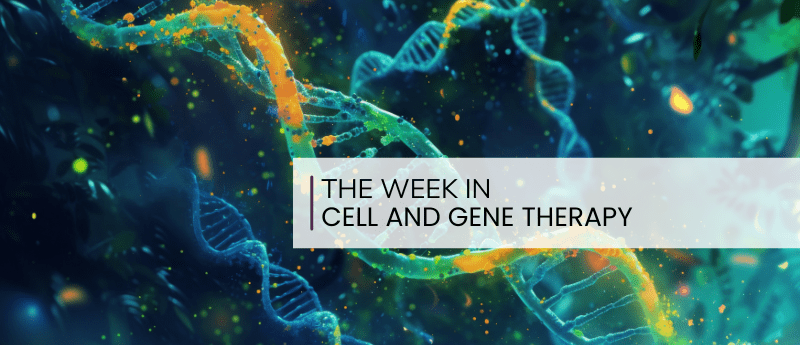Fulfilling the promise of genetic medicine: New approaches to overcoming old challenges
The field of gene therapy has seen unprecedented growth in recent years, with 20 approved indications in the U.S., a record number of approvals in 2023, and a rapid expansion of investigational trials across various diseases. Great strides have been made in potential treatments for inherited and acquired genetic diseases, including hemophilia B, sickle cell disease, and Duchenne muscular dystrophy.
But these advances have been accompanied by challenges that have proved unexpectedly difficult to overcome. In the area of rare diseases, in particular, companies have pulled back on their gene therapy ambitions due to safety and efficacy concerns coupled with the high cost of developing and manufacturing these therapies.
Viral vector challenges
Adeno-associated viruses (AAVs) are currently the most common vectors used for gene delivery. The benefits of AAVs as vectors are well-documented. Wild type AAV is not known to be associated with any human diseases and AAV vectors exhibit broad tropism, long-term expression, and low immunogenicity in vivo.
Unfortunately, the ubiquity of wild-type AAV means that 30% to 60% of humans carry neutralizing antibodies (Nabs) against these viruses, which can interfere with AAV transduction and distribution, including diverting the vector away from target cells and toward lymphoid tissue. In addition, preexisting immunity has the potential to reduce the durability of transgene expression.
Many AAV gene therapies circulate through the liver before reaching target tissues and have strong tropism for hepatocytes. However, it has been difficult to achieve effective delivery of gene therapy to extrahepatic targets such as muscle or the central nervous system (CNS). This is likely due to a combination of poor accessibility to certain tissue spaces and inefficient binding to target cells. Although administration of higher doses may achieve more widespread transduction, it can also lead to immune-mediated hepatoxicity.
In an ideal world, AAV gene therapy would be “one and done.” However, one of the characteristics that makes AAVs desirable as a vector is a disadvantage when it comes to sustained vector expression. Because AAVs are not incorporated into host chromosomal DNA, the risk of genotoxicity is lower than with other viral vectors. But this also means that in tissues with high turnover, such as the liver, vector expression can be lost as cells divide and die. This makes it difficult to predict how long a gene therapy’s therapeutic effects will last, particularly in younger patients; a challenge that is further complicated by the development of antibodies that pose a barrier to redosing.
Rising to the challenge
At Regeneron, we are taking a multipronged approach to addressing these issues and expanding the potential of gene therapies, including retargeting of AAV vectors, new delivery approaches, and development of innovative payloads.
Reducing vector tropism to the liver is critical to preventing complement activation and hepatotoxicity following transduction. This can be achieved through point mutations in the AAV capsid. However, these vectors still require targeting for efficacy. We have harnessed antibody engineering to confer novel tropism to AAVs and improve their specificity and efficacy in extra-hepatic tissues. By using antibodies to redirect the virus to the cellular target of the antibody (versus selecting for binding by the capsid itself) we are able to characterize the antibodies independently of the capsid. This provides an extra layer of control over binding properties and also allows the platform to be modular and applicable to multiple AAV serotypes across multiple species. Our antibody-based platforms differ from the peptide library-based selection strategy commonly used to screen for capsids, which has had varying success rates and can yield capsids whose tropism does not translate across species.
One platform we’ve developed for retargeting uses a protein tagging system to covalently bind antibodies to surface exposed loops on the viral capsid. To date this approach has proved successful in retargeting multiple AAV serotypes across multiple species, in vitro and in vivo, and retargeted AAVs have been shown to cross the blood brain barrier.
The second antibody-based platform for retargeting utilizes bispecific antibodies to target both the receptor of interest and the AAV itself, thereby bridging the capsid to the target cell and minimizing off-target binding. We are leveraging Regeneron’s expertise and innovation with bispecific antibodies as protein therapeutics.
In addition to improving delivery of AAV gene therapies to patients, we are also seeking to expand the potentially treatable patient population by developing methods to prevent immune responses to AAV and pave the way for redosing when expression is not sustained. Armed with our deep portfolio of validated antibodies, we are investigating regimens for tailored immune suppression and depletion of pre-existing host Nabs prior to initiating gene therapy.
Some of the most exciting work being done today is in the use of gene editing to develop novel, ultracompact payloads that address the size constraints of viral delivery and can be coupled with targeted delivery technologies such as covalent and bispecific antibody platforms. Regeneron is currently engaged in collaborative research with Mammoth Biosciences, Inc. and Intellia Therapeutics, Inc. to develop in vivo CRISPR-based gene editing for multiple cell types, including muscle and neurological tissues. In animal models, a targeted liver gene insertion platform co-developed by Intellia and Regeneron has shown sustained expression despite rapid liver growth, an early step on the path to more effective gene therapies for inherited liver disorders.
Event : International Top Pharmaceutical Awards
Visit: toppharmaceutical.org
Award registration: https://toppharmaceutical.org/award-registration/
For Enquiries:pharmaquerys123@
Get Connected Here
------------------------------
------------------------------
Pinterest: pinterest.com/pharmaemail/
Twitter: x.com/TopPharmaaward
Instagram: instagram.com/toppharma23/



Comments
Post a Comment